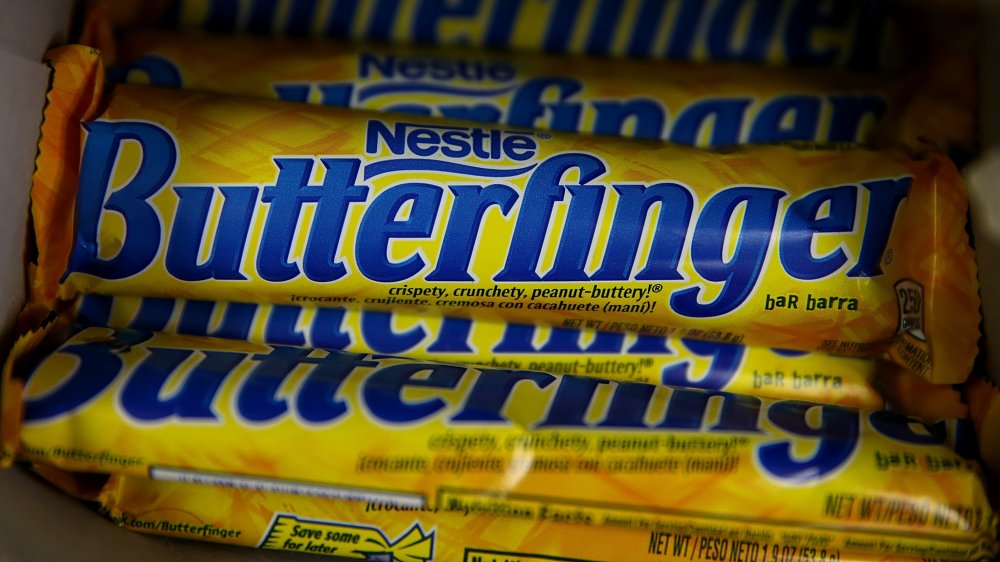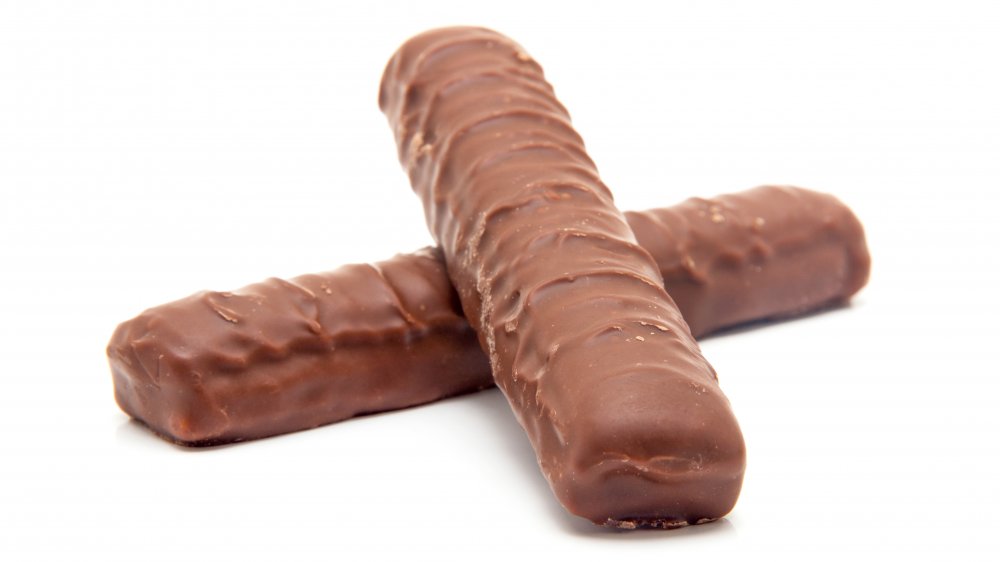The Real Reason Butterfingers Don't Taste The Same Anymore
The Butterfinger that you know and love from childhood is no more. The flaky, crunchy candy bar was sold by Nestle in 2018 (via USA Today) and bought by Ferrara, an American subsidiary of the European candy maker The Ferrero Group (via Food Business News). Both The Ferrero Group and its American branch have impressive candy portfolios with Ferrara being responsible for Crunch, Baby Ruth, and Raisinets (via Ferrara USA), and its parent company across the ocean owning Kinder and Ferrero Rocher. Nestle actually sold its entire candy business to the tune of $2.8 billion and Ferrara wanted to quickly revamp some of its newly acquired brands (via Fortune).
The company began with Butterfinger and reworked the formula to use bigger peanuts, more milk and cocoa, and fewer hydrogenated oils. The new version also no longer incorporates the chemical preservative TBHQ. With these changes, they were shooting for a more chocolate-centric flavor with purer ingredients. The Food & Wine taste test was positive, calling it "less waxy" and "more cocoa forward." The new iteration of the candy bar is also double wrapped to preserve the freshness and flavor.
Negative feedback to the new Butterfinger taste
It would stand to reason that these seemingly innocuous changes would be well received, but it turns out that not everyone is a fan of the new formula which was introduced at the beginning of last year, along with a new label. Former Butterfinger lovers were immensely disappointed in the change and decried the new version of their beloved candy as being "nasty" and that the new recipe was "trash" (via Business Insider).
According to the company, though, the change in formula may have saved the brand. Before the change, Butterfinger was experiencing declines in sales and losing customers, but after the new formula was introduced, sales "experienced periods of growth" and a wider audience was enjoying the brand. Of course, much of these improved sales were likely due to the hype of a new product and it will remain to be seen whether they hold up over time.

